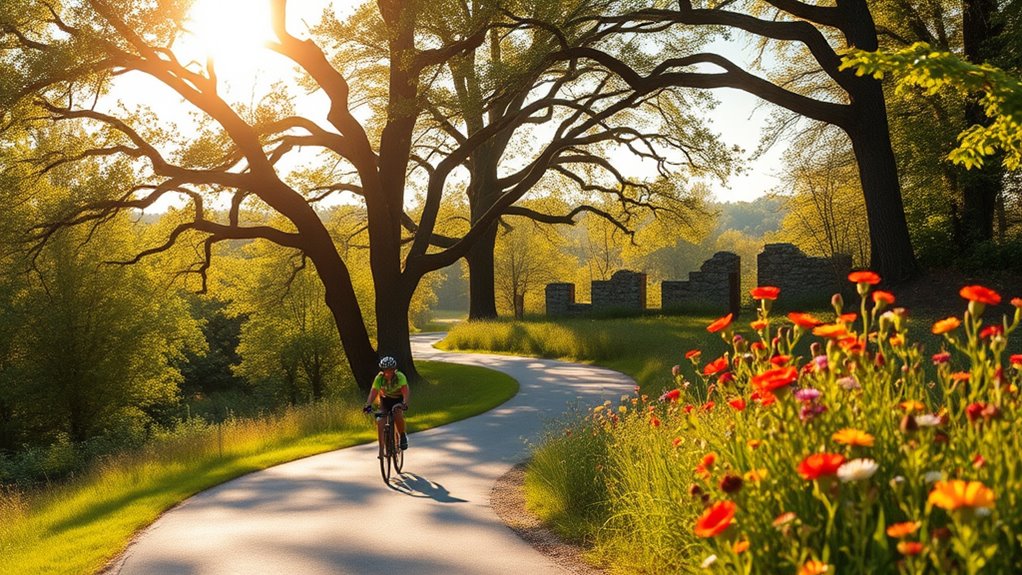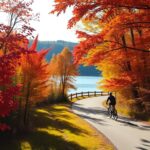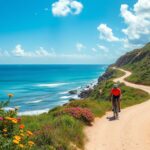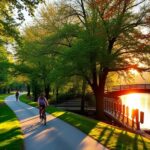Pedaling Mississippi’s Natchez Trace, you’ll discover stunning landscapes and rich history on two wheels! This scenic route stretches 444 miles, taking you through lush forests, serene wetlands, and significant historical landmarks. Along the way, you can explore ancient burial mounds, historic inns, and the burial site of Meriwether Lewis. With minimal traffic and plenty of amenities, cycling here is a breeze. Ready to uncover the cultural significance of this path? There’s so much more to explore!
Key Takeaways
- The Natchez Trace spans 444 miles through Mississippi, offering a scenic and flat route ideal for cycling enthusiasts.
- Historical landmarks, such as Emerald Mound and Meriwether Lewis Burial Site, provide rich cultural insights along the trail.
- Minimal motorized traffic on the Trace ensures a safe and enjoyable cycling experience through lush forests and wetlands.
- The pathway is steeped in history, serving as a vital trade route for Native Americans and European settlers for centuries.
- Cyclists can find restrooms and cycling-friendly lodging every twenty miles, making it convenient for multi-day adventures.
The Origins of the Natchez Trace
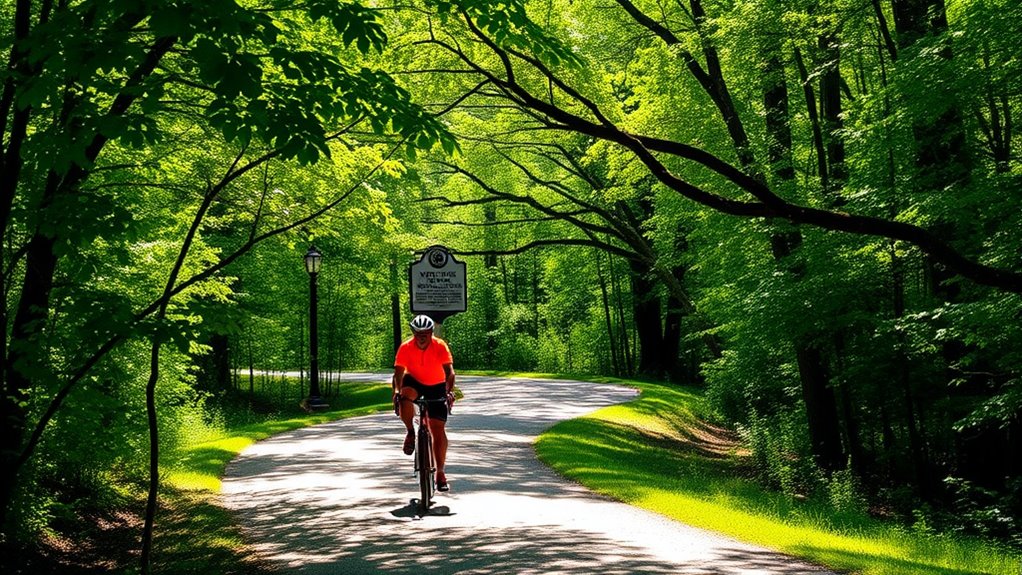
The Natchez Trace has a rich history that stretches back thousands of years, originally serving as a vital route for prehistoric animals and Native Americans.
As you explore, you’ll discover that this ancient path followed a geologic ridge line, providing dry ground for trade and travel. Evidence of early human occupation, like the Pharr Mounds, dates back to the Middle Woodland period.
The Choctaw and Chickasaw tribes significantly influenced the Trace, guiding European settlers and benefiting economically from its traffic.
Early European explorers, including Hernando de Soto, encountered this essential route during their expeditions.
Over time, the Trace evolved into a key pathway for American settlers and traders, shaping the cultural landscape of the region for generations.
Scenic Landscapes Along the Trail
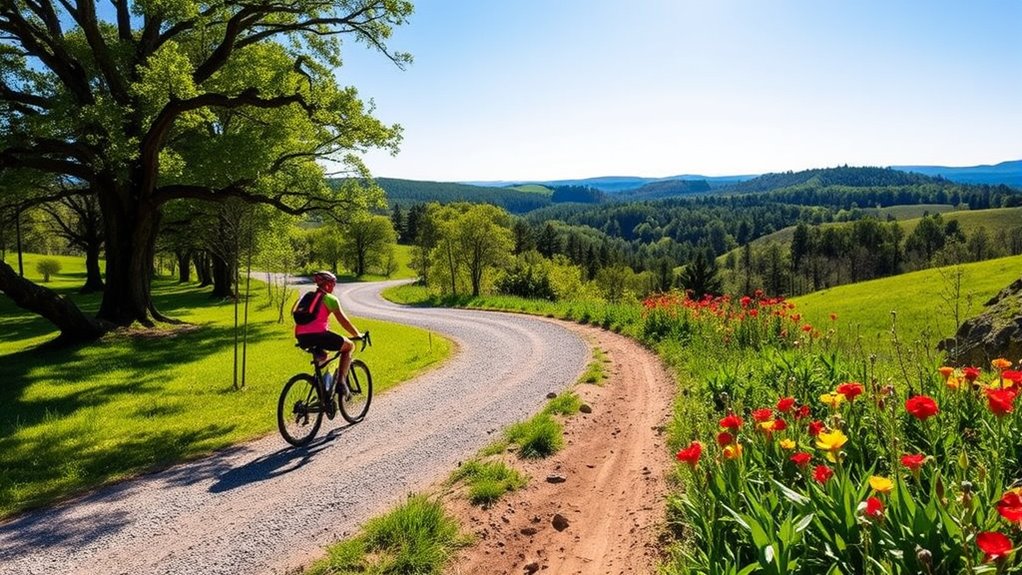
As you pedal along the Natchez Trace Parkway, you’ll be captivated by the stunning diversity of landscapes that unfold before you.
Stretching 444 miles through Tennessee, Alabama, and Mississippi, the trail showcases lush forests, serene wetlands, and open prairies. The dense forests provide shade and a habitat for wildlife, making your ride peaceful and picturesque.
Keep an eye out for white-tailed deer and wild turkeys that often roam nearby. Explore unique wetland areas like the Cypress Swamp, where bald cypress trees create a hauntingly beautiful atmosphere.
Don’t miss the scenic overlooks, like Twentymile Bottom and Baker Bluff, offering breathtaking views of rivers and farmlands. Each turn reveals a different facet of southern natural beauty, inviting you to discover more.
Historical Landmarks to Explore
While exploring the Natchez Trace Parkway, you’ll encounter a rich tapestry of historical landmarks that tell the story of the region’s past.
Start your journey at Emerald Mound, one of the largest American Indian mounds in the U.S. Next, visit Mount Locust, a surviving stand that once offered travelers much-needed hospitality.
Don’t miss the Meriwether Lewis Burial Site near Hohenwald, marking the explorer’s death in 1809. The Gordon House, built in 1818, and the historic Colbert Ferry site, operated by George Colbert, also await your discovery.
These landmarks provide a glimpse into the lives of those who traveled this route, enriching your experience as you pedal through history.
Cultural Significance Through the Ages
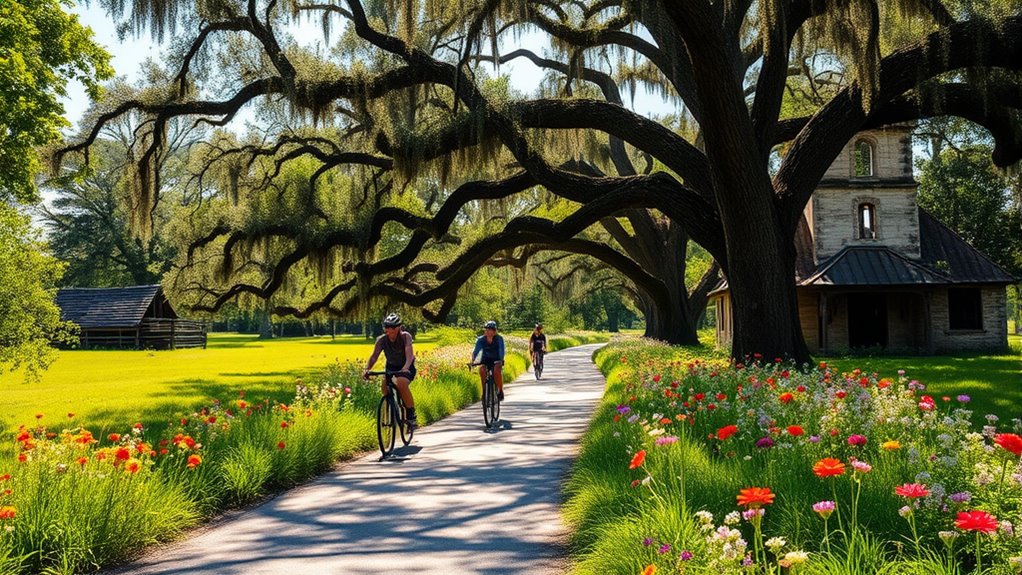
Cultural significance along the Natchez Trace has evolved dramatically over the millennia, shaping the identities of the diverse peoples who traveled its path.
For over 10,000 years, Native American tribes like the Natchez, Chickasaw, and Choctaw established vibrant cultures along this route. They initially created pathways by following game trails, leaving behind important archaeological sites that tell their stories.
In the late 18th and early 19th centuries, European explorers and settlers expanded the Trace’s role in trade and communication. By serving as a major route for commerce, it fostered connections between towns like Natchez and Nashville.
Today, as part of the National Park System, the Trace preserves this rich cultural heritage for future generations to explore and appreciate.
Cycling Adventures on the Parkway
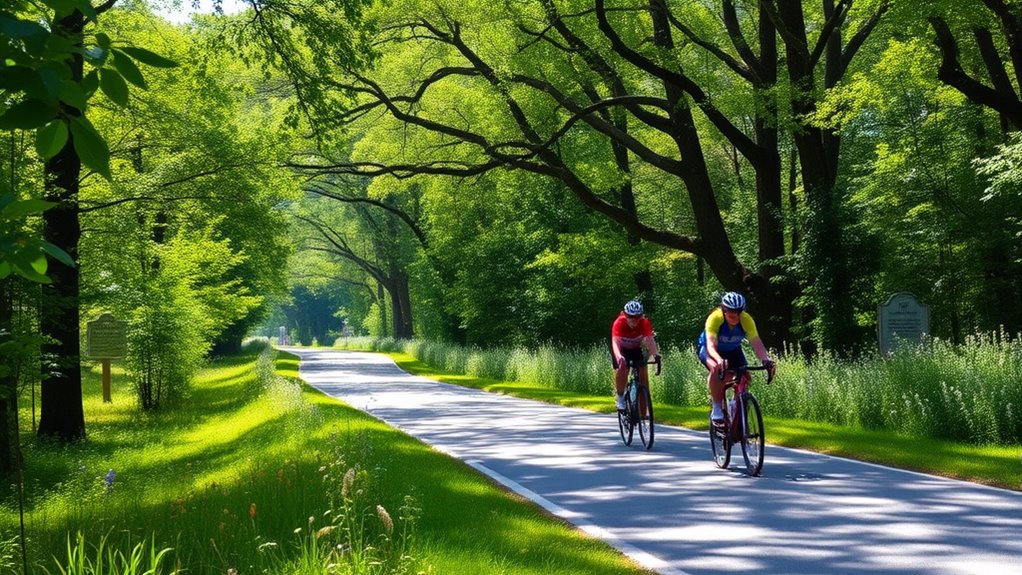
Cycling the Natchez Trace Parkway offers an exhilarating way to experience the stunning scenery and rich history of this iconic route.
Spanning 444 miles from Natchez to Nashville, the parkway’s generally flat terrain in the south transitions to rolling hills in Tennessee. With minimal motorized traffic and well-maintained roads, you can ride safely while enjoying picturesque views.
The Natchez Trace Parkway offers a scenic 444-mile ride, blending flat terrain with rolling hills, perfect for safe cycling.
Numerous access points make it easy to hop on and off, while restrooms are available every twenty miles. You’ll find cycling-friendly lodging and charming communities for dining and shopping.
Whether you choose a self-guided itinerary or join a guided tour, prepare for an unforgettable adventure filled with historical sites and natural beauty along the way!
Modern-Day Attractions and Activities
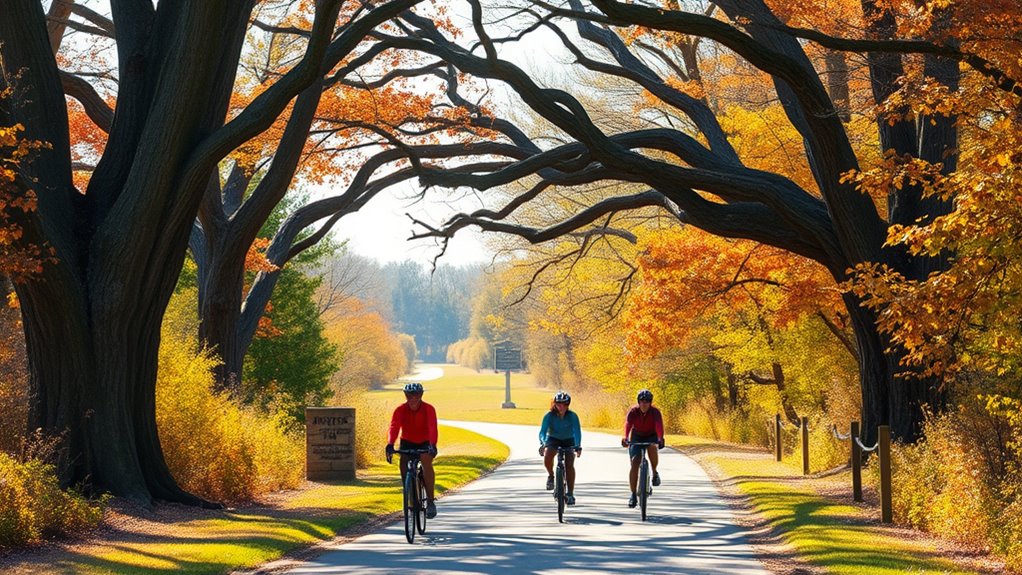
Exploring the Natchez Trace Parkway goes beyond cycling; it offers a wealth of modern-day attractions and activities that enhance your experience.
You can visit historic sites like Mount Locust and Windsor Ruins, and explore natural gems such as Cypress Swamp and Rock Spring Trail. Don’t miss the ancient Native American mounds at Pharr Mounds, or the insights provided at the Natchez Trace Parkway Visitor Center.
For outdoor enthusiasts, hiking trails and picnic areas abound, while local festivals and artisan demonstrations connect you with the community.
After a day of adventure, indulge in Southern cuisine at local eateries or relax at charming historic inns.
Whether you’re seeking history, nature, or culture, the parkway has something for everyone.
Frequently Asked Questions
What Is the Best Time of Year to Cycle the Natchez Trace?
The best time of year to cycle the Natchez Trace is during spring and fall.
You’ll enjoy ideal temperatures, typically between 60-70°F (15-20°C), and lower humidity in the fall, making your ride more comfortable.
Spring showcases blooming flowers, while fall offers stunning foliage.
Both seasons host various cycling events, providing a great opportunity to connect with fellow cyclists.
Plan your trip during these times for the best experience on the Trace!
Are There Any Fees to Enter the Natchez Trace Parkway?
Imagine wandering through history without a cost.
You’ll be pleased to know there are no entrance fees to access the Natchez Trace Parkway. That means you can explore its scenic beauty and rich historical significance freely!
While some nearby activities might’ve fees, the parkway itself welcomes you without charge.
Can I Camp Along the Natchez Trace Parkway?
Yes, you can camp along the Natchez Trace Parkway!
There are three main campgrounds—Meriwether Lewis, Jeff Busby, and Rocky Springs—where you can set up your tent for free on a first-come, first-served basis.
Keep in mind that these campgrounds offer primitive facilities, so you won’t find electricity or showers.
The maximum stay is 14 consecutive nights, and you must camp in designated areas, as dispersed camping isn’t allowed.
Is the Natchez Trace Suitable for Beginner Cyclists?
Yes, the Natchez Trace is suitable for beginner cyclists.
With its easy to moderate difficulty level and well-maintained roads, you’ll find it accessible. The terrain starts flat and gradually becomes hillier, allowing you to build your skills.
Plus, light traffic and minimal intersections make for a safer experience.
Just remember to plan your trip for spring or fall and consider camping options or nearby accommodations for a comfortable adventure.
Are Pets Allowed on the Natchez Trace Parkway?
Yes, pets are allowed on the Natchez Trace Parkway, but there are some rules you need to follow.
You can bring up to two pets per campsite, and they must be leashed at all times, with a leash no longer than 6 feet.
While enjoying the trails, keep your pets close and be mindful of wildlife.
Remember to clean up after them and never leave them unattended.
Enjoy your adventure together!
Conclusion
As you pedal along Mississippi’s Natchez Trace, you’re not just enjoying the ride; you’re tracing the footsteps of history. From the breathtaking landscapes to the rich cultural tapestry, every mile tells a story. Whether you’re discovering ancient pathways or snapping selfies at historic landmarks, the adventure is yours to create. So, throw on those retro shades and embrace the journey—because this isn’t just a bike ride; it’s a ride through time!
